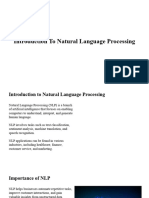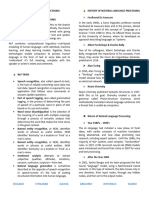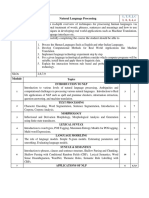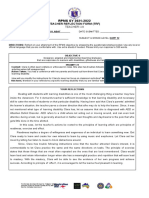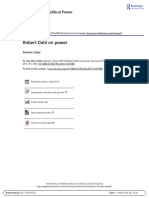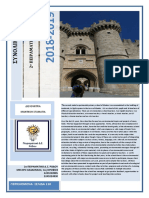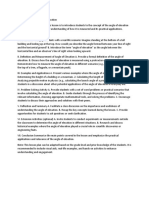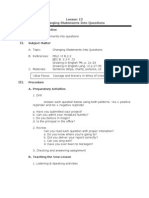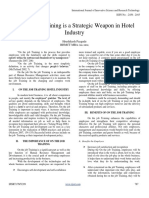Lal Bahadur Shastri Institute of Management, Delhi
Natural Language Processing
2018-19
Credit: One Sessions: 10 of 3 hours each
Instructor: Prof. Nakul Gupta, MDI Gurgaon
Course Introduction:
This course will cover the foundations of natural language processing (NLP) from textual content
processing to corpus understanding for management student who intend to delve deeper into
the analytical realm of business. It is designed to develop the syntactic and semantic concepts
of NLP and to introduce the computational techniques for analyzing and understanding textual
content using programming languages such as Python. In addition to foundations, the course
will also introduce significant application areas of NLP such as sentiment analysis, machine
translation, and question-answering/conversational agents (CHATBOTS).
Course Objectives
1. To introduce the fundamental concepts and techniques in textual natural
language processing
2. To provide experience in the implementation and evaluation of NLP algorithms
3. To introduce NLP resources and application areas
4. To link theory with practice and demonstrate practical applications of NLP in the
domain of Business
Learning Outcomes
1. Process and segment textual content for natural language processing
2. Extract syntactic and semantic structure from text
3. Use language resources and corpora to implement NLP solutions
4. Process multi-lingual and informal-language text in NLP solutions
Grading Breakup
� Class Assignment(s) 2
0
%
Project 2
5
%
Midterm 2
Examination/Submission 5
%
Final Examination 3
0
%
Session
Overvi Topic Recommended Readings/Links
ew
1-2 Introduction to NLP and Business Applications AI’s Next Great Challenge:
Understanding the Nuances of
Language – Harvard Business Review
https://hbr.org/2018/07/ais-next-
great-challenge-understanding-the-
nuances-of-language
3-4 Basic Text Processing https://medium.com/analytics-
vidhya/introduction-to-natural-
language-processing-part-1-
777f972cc7b3
5-6 Edit Distance and Text Similarity https://medium.com/
@appaloosastore/string-similarity-
algorithms-compared-3f7b4d12f0ff
7-8 Language Modeling https://www.cs.bgu.ac.il/~elhadad/
nlp18/nlp02.html
https://nlp.stanford.edu/IR-book/
html/htmledition/types-of-language-
models-1.html
9-10 Text Classification and Sentiment Analysis https://www.kdnuggets.com/
2018/03/5-things-sentiment-
analysis-classification.html
11-12 Information Extraction Natural Language Processing for
Information Extraction
https://arxiv.org/abs/1807.02383
13-14 POS Tagging and Parsing https://medium.com/greyatom/
learning-pos-tagging-chunking-in-
nlp-85f7f811a8cb
15-16 Semantics and Text Resources, Question http://www.bowdoin.edu/~allen/
Answering
� nlp/nlp6.html
https://chatbotslife.com/
introduction-into-semantic-
modelling-for-natural-language-
processing-c4c885175ca7
17-18 Machine Translation and Chatbots https://www.cl.cam.ac.uk/
teaching/0809/NLP/slides-steve.pdf
19-20 Project Presentations
Reference Textbook(s)/Supplementary Readings
rd
1. Speech and Language Processing, 3 Edition, Jurafsky and Martin, Stanford
University, https://web.stanford.edu/~jurafsky/slp3/, 2017.
2. Natural Language Processing with Python, Bird and Klein, O’Reilly Media, 2009.
Programming Environment: PYTHON


























